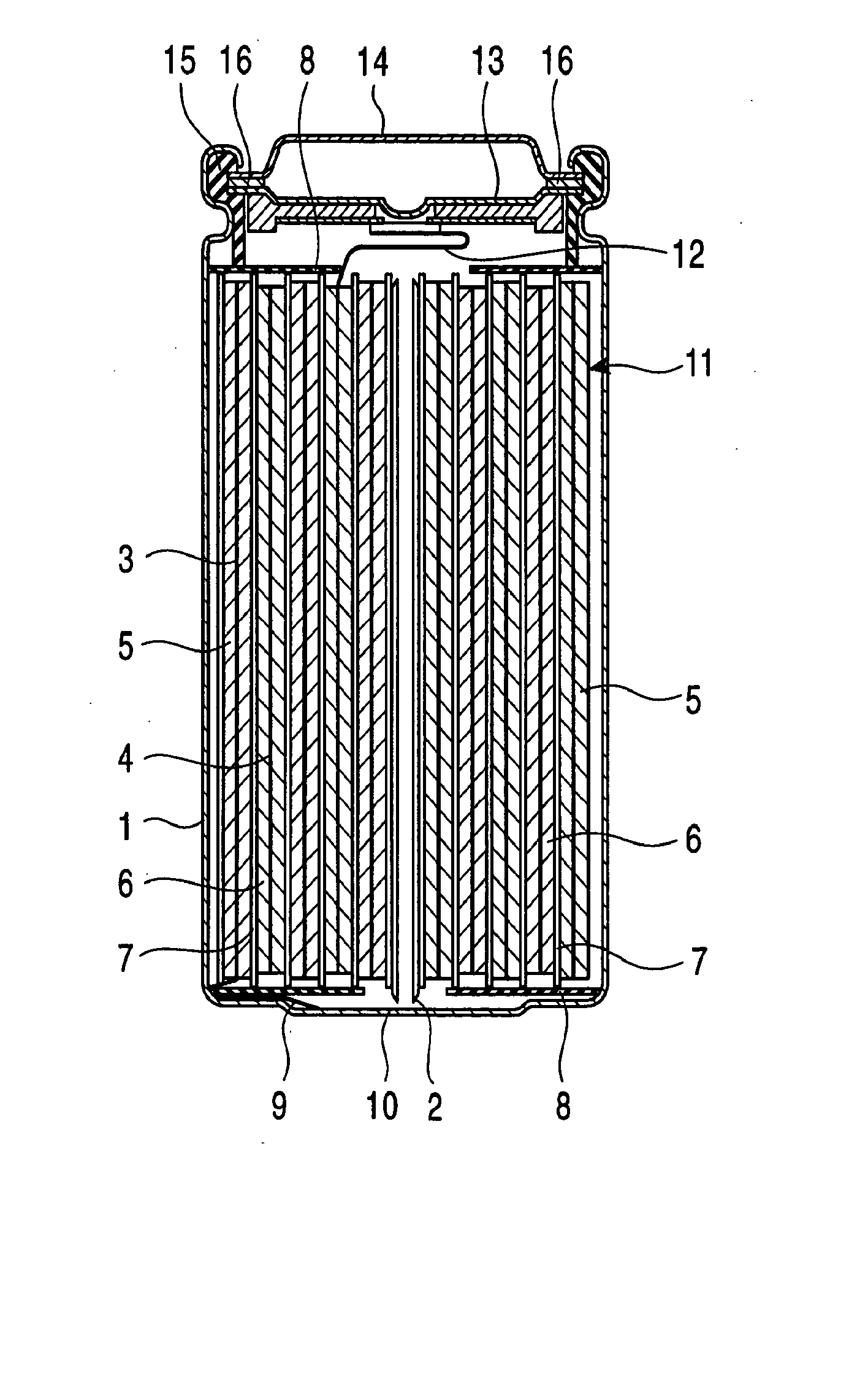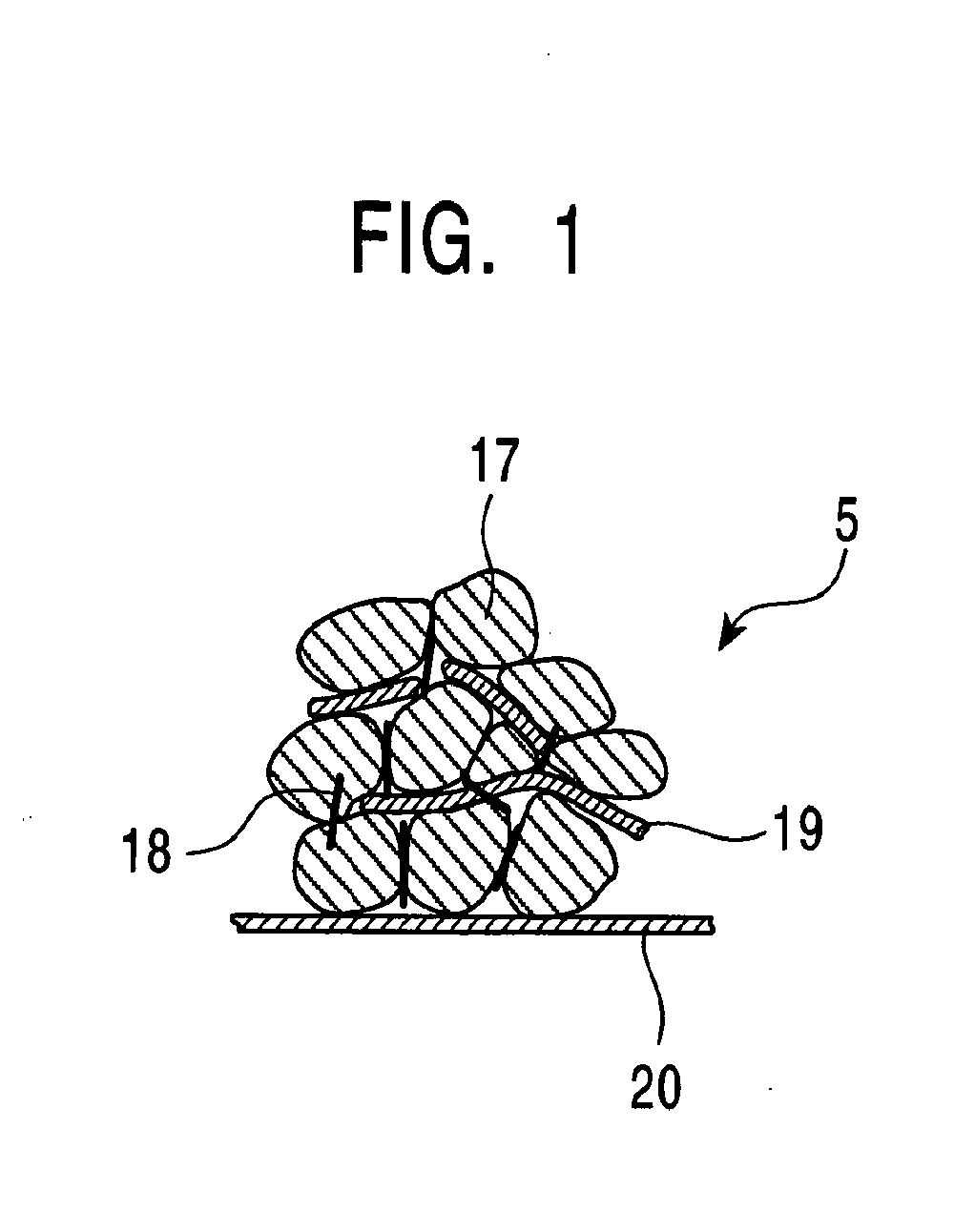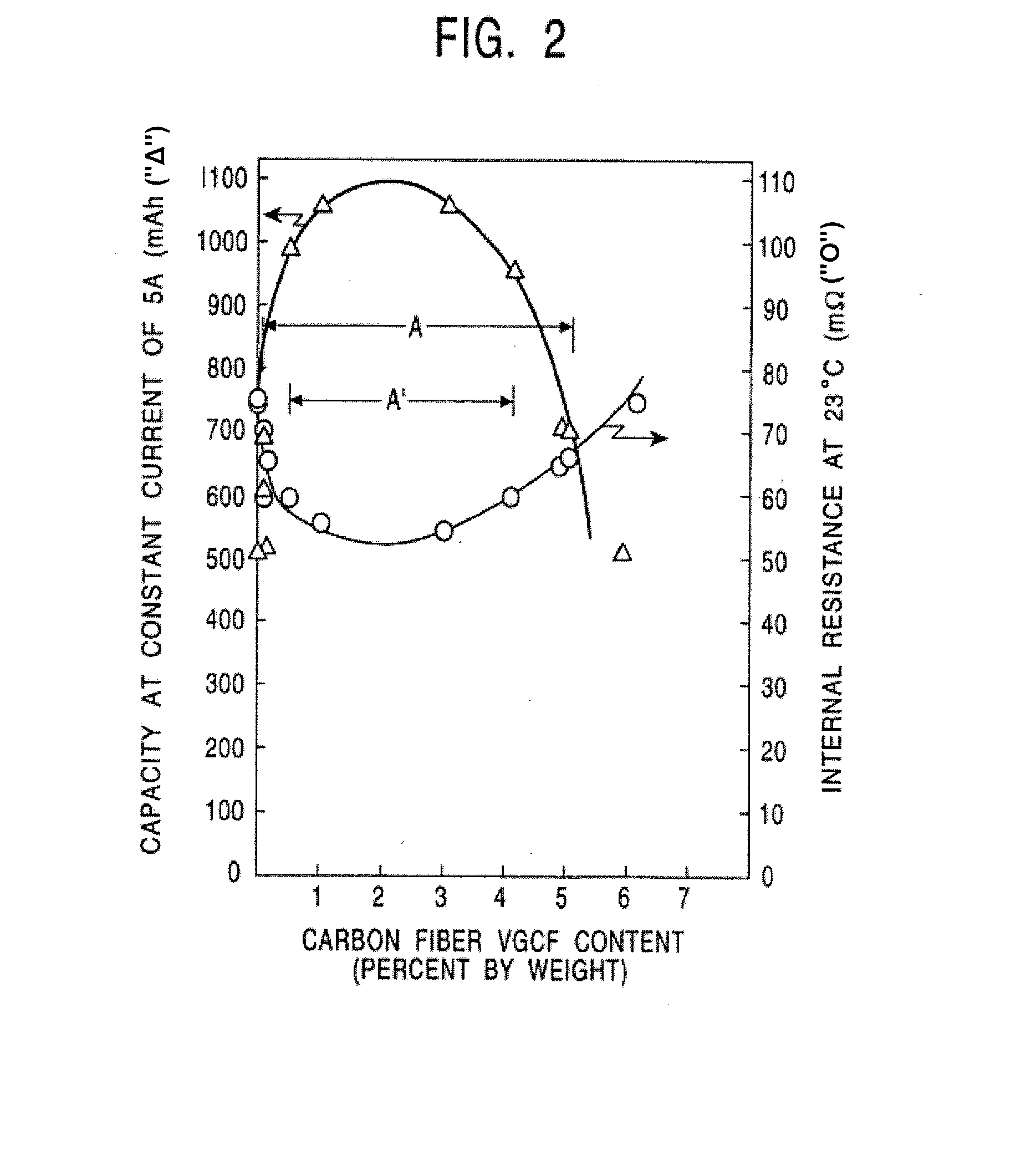Non-aqueous electrolyte secondary battery having a negative electrode containing carbon fibers and carbon flakes
a secondary battery and negative electrode technology, applied in the direction of non-aqueous electrolyte cells, cell components, electrochemical generators, etc., can solve the problems of increasing energy densities, improving capacity, and unsatisfactory current non-aqueous electrolyte secondary batteries, etc., to achieve satisfactory capacity characteristics
- Summary
- Abstract
- Description
- Claims
- Application Information
AI Technical Summary
Benefits of technology
Problems solved by technology
Method used
Image
Examples
example 1
[0059] To 100 parts by weight of coal coke as a filler, 30 parts by weight of coal tar pitch as a binder was added. These were mixed at approximately 100° C., and were compression-molded by a press to form a precursor. The precursor was heat-treated at 1,000° C. or less to form a carbonaceous molded article. The carbonaceous molded article was subjected to a pitch impregnation step for impregnating a binder pitch melted at 200° C. or less therein and a calcination step for heating at 1,000° C. or less. These steps were repeated several times. The carbonaceous molded article was heat-treated in an inert gas atmosphere at 2,700° C. to form a graphitized molded article. The graphitized molded article was pulverized and classified to prepare negative-electrode active material particles.
[0060] This graphite material had a doo2 distance of approximately 0.337 nm, a thickness of the c-axis crystallites in the (002) plane of 50.0 nm, a sphericity by pycnometry of 2.23, a bulk density of 0....
example 2
[0068] A nonaqueous electrolyte secondary battery was prepared as in Example I, but 3 percent by weight of VGCF and 5 percent by weight of KS-15 were mixed therein.
example 3
[0069] A nonaqueous electrolyte secondary battery was prepared as in Example 1, but 4 percent by weight of VGCF and 5 percent by weight of KS-15 were mixed therein.
PUM
| Property | Measurement | Unit |
|---|---|---|
| particle size | aaaaa | aaaaa |
| density | aaaaa | aaaaa |
| thickness | aaaaa | aaaaa |
Abstract
Description
Claims
Application Information
 Login to View More
Login to View More - R&D
- Intellectual Property
- Life Sciences
- Materials
- Tech Scout
- Unparalleled Data Quality
- Higher Quality Content
- 60% Fewer Hallucinations
Browse by: Latest US Patents, China's latest patents, Technical Efficacy Thesaurus, Application Domain, Technology Topic, Popular Technical Reports.
© 2025 PatSnap. All rights reserved.Legal|Privacy policy|Modern Slavery Act Transparency Statement|Sitemap|About US| Contact US: help@patsnap.com



